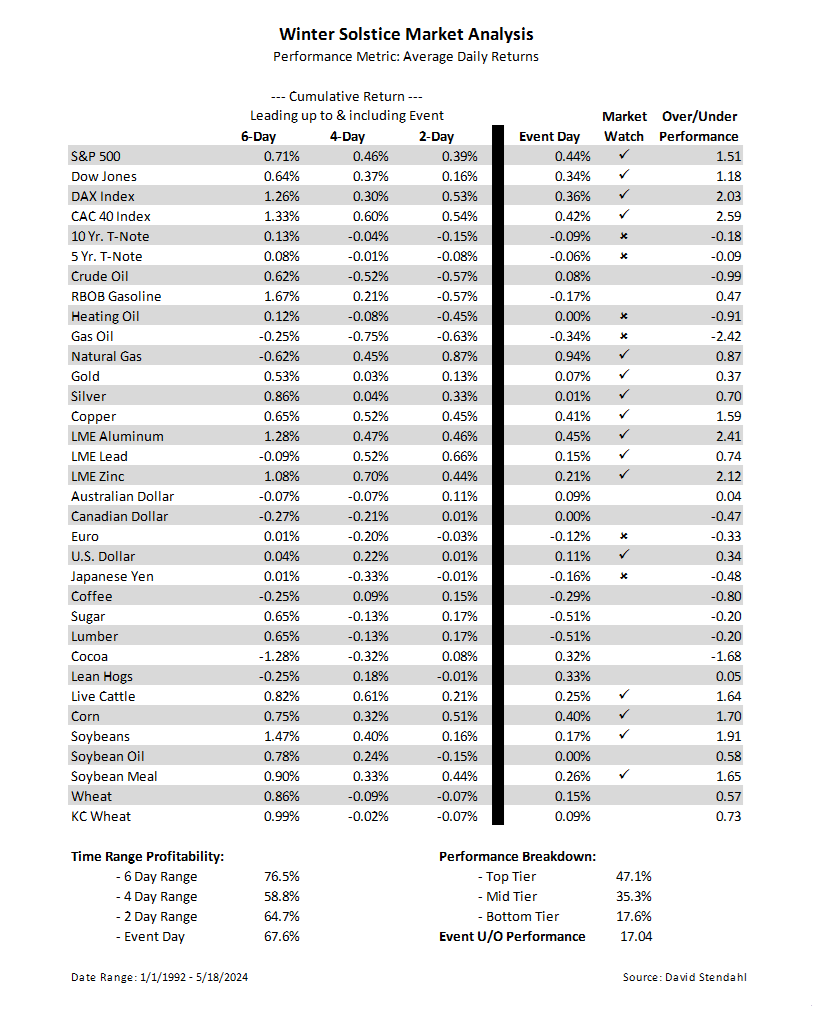Event: Winter Solstice
The Winter Solstice marks the beginning of winter in the Northern Hemisphere typically on December 21st or the 22nd. Although, technically it can take place any time between the 20th and 23rd of December. By definition, Winter Solstice is the point at which the Earth’s axis is tilted directly away from the Sun resulting in the shortest day / longest night of the year. This astronomical definition of winter will last until the Vernal Equinox. From a meteorological point of view, it should be noted that winter begins on December 1st.
The questions is … do the markets make big moves or freeze in place heading into winter?
Market Comparision
How do the markets perform leading up to and including the Winter Solstice? The analysis table below breaks down each of the 30+ markets into four separate trading periods. These time frames span 6-days, 4-day, 2-days, and the event day itself. The return performance for each time frame is measured against its normal performance during the year to calculate a final over or underperformance return. This metric quantifies, in percentage points, the advantages or disadvantages associated with the Winter Solstice. Markets highlighted with a checkmark or an “x” should be closely monitored for potential strength or weakness heading into the event.

Calendar Breakdown by Events
All trading involves risk. Leveraged trading has large potential rewards, but also large potential risk. You must be aware of the risks and be willing to accept them in order to invest in the futures and options markets. Don’t trade with money you can’t afford to lose. This is neither a solicitation nor an offer to Buy/Sell futures or options. No representation is being made that any account will or is likely to achieve profits or losses similar to those discussed. The past performance of any trading system or methodology is not necessarily indicative of future results.
Our strategies have not been developed based on knowledge of or with reference to your particular circumstances, such as financial position, goals, risk-reward preferences, tax situation, brokerage arrangement, investment or trading experience, and so forth. Hence no content or model published here constitutes a recommendation that any particular security, portfolio of securities, transaction, or investment strategy is suitable for any specific person. You alone are solely responsible for determining whether any investment, security or strategy, or any other product or service, is appropriate or suitable for you based on your investment objectives and personal financial situation. More
